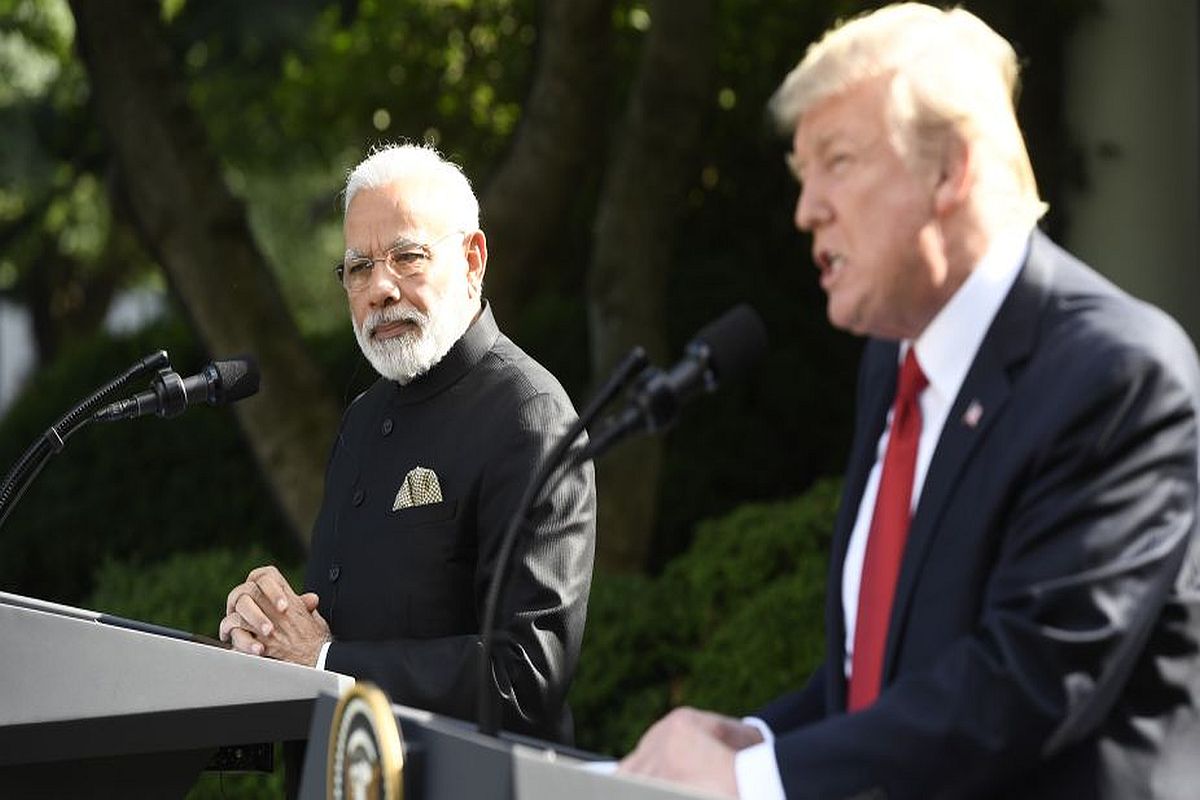
Donald Trump reiterates offer to ‘mediate’ on India-China border dispute, says PM Modi ‘not in good mood’
Indian and Chinese troops have remained engaged in an eyeball-to-eyeball situation in several areas along the LAC in eastern Ladakh, signalling that the standoff could become the biggest military face-off after the Doklam crisis in 2017.
by SNS WebReiterating his offer to mediate on the border dispute between India and China, US President Donald Trump on Thursday said he had spoken to Prime Minister Narendra Modi, who is “not in a good mood” over the conflict between the two nations.
Speaking to reporters at the Oval Office of the White House, Trump said, “They like me in India. I think they like me in India more than the media likes me in this country. And, I like Modi. I like your prime minister a lot. He is a great gentleman.”
“They have a big conflict …India and China. Two countries with 1.4 billion people (each). Two countries with very powerful militaries. India is not happy and probably China is not happy,” the president said when asked if he was worried about the border situation between India and China.
“I can tell you; I did speak to Prime Minister Modi. He is not in a good mood about what is going on with China,” Trump said.
He then reiterated his offer to mediate in the matter saying, “If they thought it would help if I were the mediator or arbitrator, I would do that.”
Amid heightened tensions at the Line of Actual Control (LAC) in eastern Ladakh, US President Donald Trump on Wednesday made a surprise offer to mediate between India and China over what he calls “their now raging border dispute”.
“We have informed both India and China that the United States is ready, willing and able to mediate or arbitrate their now raging border dispute. Thank you!,” President Trump tweeted on Wednesday.
Several areas along the LAC in Ladakh and North Sikkim have witnessed major military build-up by both the Indian and Chinese armies recently, in a clear signal of escalating tension and hardening of respective positions by the two sides even two weeks after they were engaged in two separate face-offs.
The nearly 3,500-km-long LAC is the de-facto border between the two countries.
Indian and Chinese troops have remained engaged in an eyeball-to-eyeball situation in several areas along the LAC in eastern Ladakh, signalling that the standoff could become the biggest military face-off after the Doklam crisis in 2017.
Trump’s mediation offer comes as no breakthrough has taken place till Monday even as the India Army and China’s People’s Liberation Army held several meetings to resolve face-off in Eastern Ladakh at LAC.
It is learnt that there have been at least five rounds of talks between military commanders on the ground.
China has recently accused India of unilaterally attempting to change the status of the un-demarcated border in Ladakh after troops of the two countries were involved in scuffles at Ladakh and Sikkim in which more than ten of them were injured.
On the other hand, Indian armed forces have accused Chinese army of blocking patrols and unnecessarily erecting tents and deploying forces at Sikkim and Ladakh inside Indian territory on the LAC between the two countries.
Indian and Chinese soldiers were also engaged in two face-offs – one, in the first week of May when 250 Indian and Chinese soldiers clashed with iron rods, sticks, and even resorted to stone-pelting in the Pangong Tso lake area in Ladakh and two, in the second week of May, when around 150 soldiers of both sides had a face-off near Naku La Pass in Sikkim.
In both the incidents, soldiers sustained injuries.
The United States has accused China of engaging in provocative and coercive military and paramilitary activities with neighbouring countries including India. This White House statement comes a day after a top American diplomat backed India’s move to strongly resist Chinese aggression into its territory.
The White House said in a report, “Beijing contradicts its rhetoric and flouts its commitments to its neighbours by engaging in provocative and coercive military and paramilitary activities in the Yellow Sea, the East and South China Seas, the Taiwan Strait, and Sino-Indian border areas.”
“As China has grown in strength, so has the willingness and capacity of the Chinese Communist Party (CCP) to employ intimidation and coercion in its attempts to eliminate perceived threats to its interests and advance its strategic objectives globally,” the report stated.
“Beijing’s actions belie Chinese leaders’ proclamations that they oppose the threat or use of force, do not intervene in other countries’ internal affairs, or are committed to resolving disputes through peaceful dialogue,” it said.